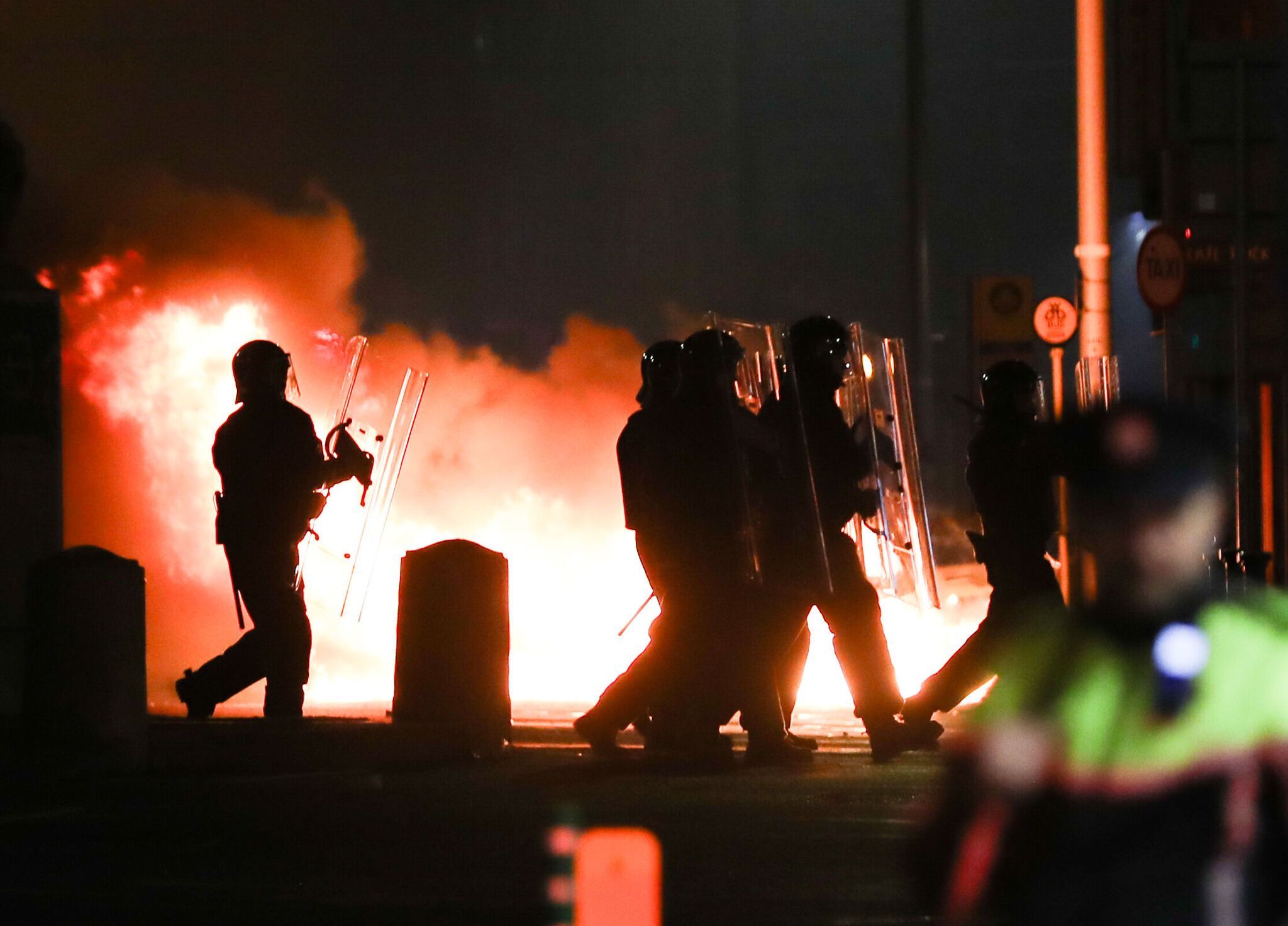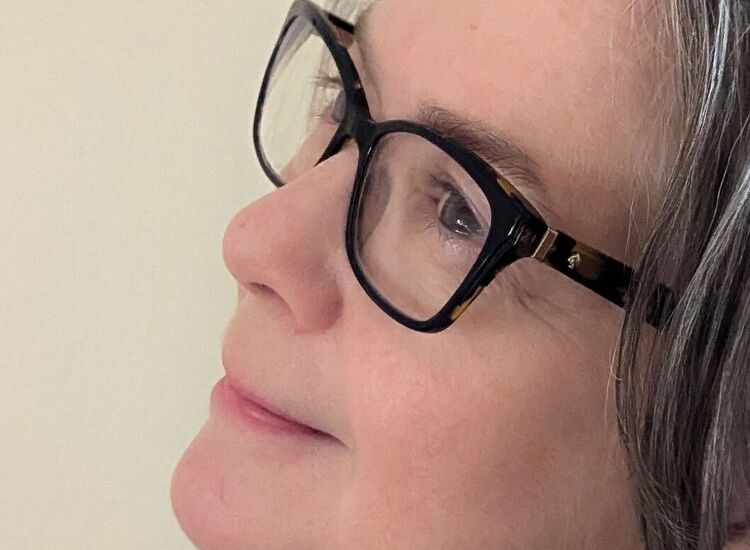Like many people who saw the repulsive images of violence from the recent Dublin riot, I felt a range of emotions: disgust, sadness, astonishment, anger, and shame to name just a few.
I agreed with the statements of Irish Prime Minister Leo Varadkar who said that the unrest was “not who we are” and that those involved in the riots had “brought shame on Ireland.” He added, “The rioters did not do what they did “out of any sense of patriotism, however warped; they did so because they are filled with hate.”
Yet I also feel that Varadkar failed to address the deeper issues that are transforming Ireland and which led to the night’s violence. The riots were a wake-up call and a kind of slap in the face to those who naively believed for far too long that Ireland would remain immune to far-right developments sweeping the rest of the world.
A homeless encampment in Dublin. RolingNews.ie photo.
The violence proved to be a kind of Dorian Gray like mirror and Ireland’s reflection in that looking glass is far from pretty. The unrest raises a number of difficult, troubling questions that Ireland needs to answer. How could hundreds of young Irish-born people perpetrate and celebrate such violence? What motivated them? What are the roots of their anger and how can Ireland avoid a repeat of this terrible incident? What kind of dialogue does Irish society need to have with the hundreds of alienated young people who ran amok?
Though I was shocked by the violence, as was the vast majority of Irish society, perhaps we should not have been. I spent May and June traveling widely in the Republic and chatting to people, and I was often taken aback by the anger and alienation that people expressed to me.
Ireland has always been a country famous for its ten thousand welcomes, but today many Irish people, especially those who are just struggling to get by, feel rage towards the large numbers of immigrants and refugees who now are entering Ireland. A few decades ago, Ireland was predominantly White and Roman Catholic.
Today, however, around 20 percent of people living in the Republic of Ireland were born in another country and many on the Irish far right resent these newcomers. In the year leading up to this past April, the number of immigrants to Ireland reached a 16-year high of 141,600, according to official data, including more than 40,000 Ukrainians. “It’s very rapid change and some people at the margins of society and underprivileged are feeling aggrieved,” Said Gail McElroy, a politics professor at Trinity College Dublin. “And people who are dissatisfied are seeking someone to blame.”
Though I was shocked by the violence, as was the vast majority of Irish society, perhaps we should not have been. I spent May and June traveling widely in the Republic and chatting to people, and I was often taken aback by the anger and alienation that people expressed to me.
One of the false claims I heard around Ireland is that the people arriving in Ireland are allowed to enter without any vetting or control, and some of the rioters echoed this sentiment. A young woman who was amongst the rioters explained, “I’m not racist; I don’t mind people coming in if they respect Irish people. But the likes of the toe rags coming into this country – they’re not vetted and are causing havoc.” Another bystander watching the Dublin violence explained to a New York Times reporter that “unregulated” arrivals were ruining Ireland. “We’re rammed to the gills with foreigners doing mad shit. You can’t do this to Irish people.”
Though Irish people have for centuries found refuge around the world, this has been forgotten by those who rioted. Again and again in my travels around the Republic, I heard people expressing anger at the hundred thousand or so Ukrainians who have arrived in Ireland, the majority of whom require government assistance with housing and other social services.
People vented their ire noting that Ireland has a large and growing homeless population whose needs should come before those coming from other lands. Though I applaud Ireland’s efforts to welcome Ukrainian refugees and deplore acts of violence against them or any other refugees, I also believe that the Irish government should have publicly addressed this serious challenge settling so many Ukrainians posed.
The government, I feel, proved itself negligent in preparing Irish society for this very difficult challenge. The government’s lack of true dialogue with the population resulted in many people who felt marginalized and angry seeking out and listening to extremist voices on the right, the same voices who egged on the violence in Dublin.
One of the comments I heard repeatedly in discussing immigrants and refugees was the sentiment that the Irish government cares more about newcomers to Ireland than it does about its own people. One of the rioters carried a placard proclaiming, “Irish Lives Matter,” as if the government did not value the lives and needs of its own citizens. This placard reflects the profound isolation and desperation felt by those left behind in today’s rapidly changing Ireland. Such alienated people are easily led into the streets to fight with the Gardai.
Many of the young people who wrapped their faces in balaclavas sadly feel that their only recourse is violence. “People need to fight for this country,” said Samantha, a 27-year-old mother, while masked rioters battled police attempting to retake Eden Quay along the River Liffey. Samantha added, “When we do things peacefully we get ignored.” She expressed the sense of betrayal many of the rioters feel saying, “I’m out here fighting for my country. We shouldn’t have to do this.”
Much of the anger reflects the extreme housing crisis Ireland is facing. The shortage and inordinately high cost of housing have fueled a backlash against refugees and asylum seekers, with many saying that foreigners are receiving preferential treatment.
Protesters have previously held rallies chanting “Ireland is full.” But the issues underlying the violent disorder go back further, said Matthew Donoghue, associate professor in social policy at University College Dublin.
“People feel insecure, people feel worried, people feel out of control — not because of migration but because of the social and economic conditions in which they have to live,” he said, pointing to an increase in inequality, including in housing, that has priced out some long-term Dublin residents. He added, “There have been groups that have become very adept at capitalizing on this.”
Once, not long ago, buying a home or finding a reasonably priced flat was a reality for young Irish people, but today huge numbers of Irish people have abandoned that dream and doubt that they will ever own a home in the land where they were born, which leads to a sense of anger and frustration.
People who do not feel themselves to be stakeholders are much more receptive to messages of hate and violence than those who feel that they have a future in Ireland.
Another cause of the violence is the breakdown of faith. It is hard to imagine such violence occurring in Ireland forty years ago, but many of those who looted, attacked the police, and burned public property have grown up in an Ireland that is not anchored in religious morality. Once the Catholic Church would have been able to open a dialogue with young Irish people, but today the church has lost its hold on the young.
The violence is symptomatic of many deeper ills that Ireland has failed to adequately address. A national dialogue needs to happen and the government must enact serious reforms that will address the serious unresolved issues that led to the violence. If Ireland does not take steps to address the underlying tensions beneath the riot, Irish society will remain polarized, and such violence will sadly become more commonplace.








